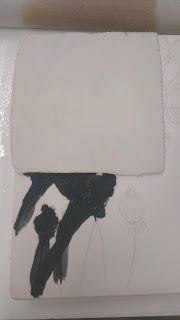Making Porcelain Paper clay:
I recently found out that Paper clay has many advantages since increased pre-firing strength, The translucence of the porcelain will work as a bonus for me. I love to make thing the thin as possible. and make the clay reach its limit and adding the paper to this equation seems te best way to go. reduction in warping, increased joining capacity in both wet-to-wet joints and dry-to-dry joining and the translucence of the porcelain work as a bonus for me. Paper clay has made a whole array of techniques available to me that I could not have thought of even a year ago. Since my project involve some wall panel I want them to be light as possible, and here's where the paper clay takes an important part. With Super thin building techniques and the high firing I´m hopping to make the panels light as possible,

So my research starts with finding the best paper clay recipe using different papers or fibers. Its possible to buy ready made paper clay but I prefer to make my own . All types of paper can be used for paper clay. Many people use toilet paper because it is very fine milled paper and is easily broken down in the mixing process. There is a very good reason not to use this paper source. When broken down in the clay mixture, the paper will begin the process of rotting. Believe me I know. The smell almost killed me. Alternatively you can use news Paper, it's cheaper and a good source of recycling material. The down size of using newspaper is that you need to boil the Put the paper in hot water r until a thin paper pulp is achieved and Strain the pulp and add it to the clay mixture. It is very hard to break down this paper pulp. I need to boil the paper at least three times.
So for now I use three different recipes with different fibers with unique results. On my first batch I mixed cartridge paper to the clay , I left the paper on hot water over night to break it down and then added to my slip (that I made previously) and I use a Old food processor to mix it all together and to make the slip really soft with no lumps.
My second recipe consisted in a mixture of nylon fibers, very difficult to break this down since basically you are trying to break down plastic (so basically is more like fiberclay insted of paperclay), I add 15g to my slip and once again I use the blender to mix it all together (difficult process as well, I almost thought that the blender was going to die.
My third recipe and the easiest one. Adding Cellulose Fibers to the clay. One bag of 1Kg costs around £6 and should be enough for almost any size studio. I add 5% by volume to my slip. I put the paper clay pulp on plaster slabs and after wedged it was ready to use.
So far the Paper Clay with the Cellulose fiber its my favorite because its the easiest to make. Its very stable and the end result very satisfactory. A was very surprised with the nylon fibers. When I was trying to make the samples, it almost looks like a piece of fabric. very difficult to cut with the scalper, I had to use a par scissors in the end but the final result was very satisfied.
I can definitely see great potential in using it in my future projects. Is easy to fire as it is very forgiving, EXCEPT! there will be smoke and bad smells up to 1000ºC degrees
.













































